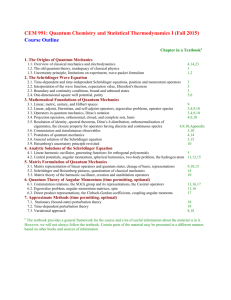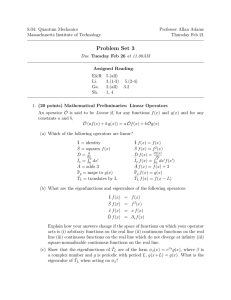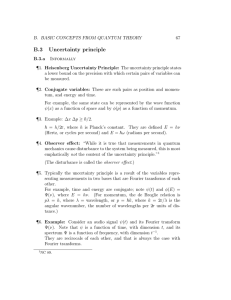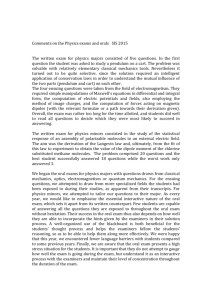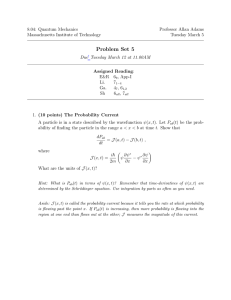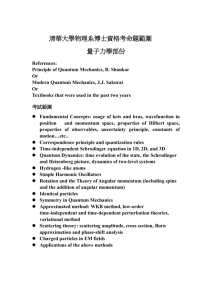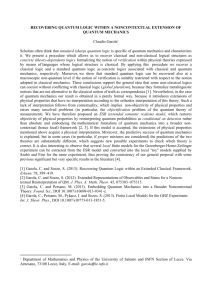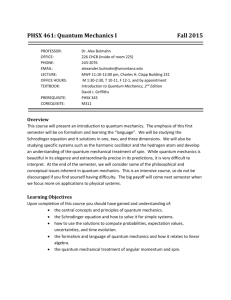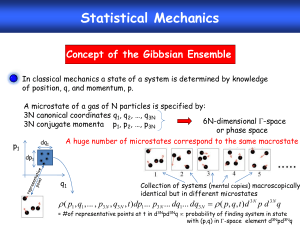Quantum Mechanics
advertisement
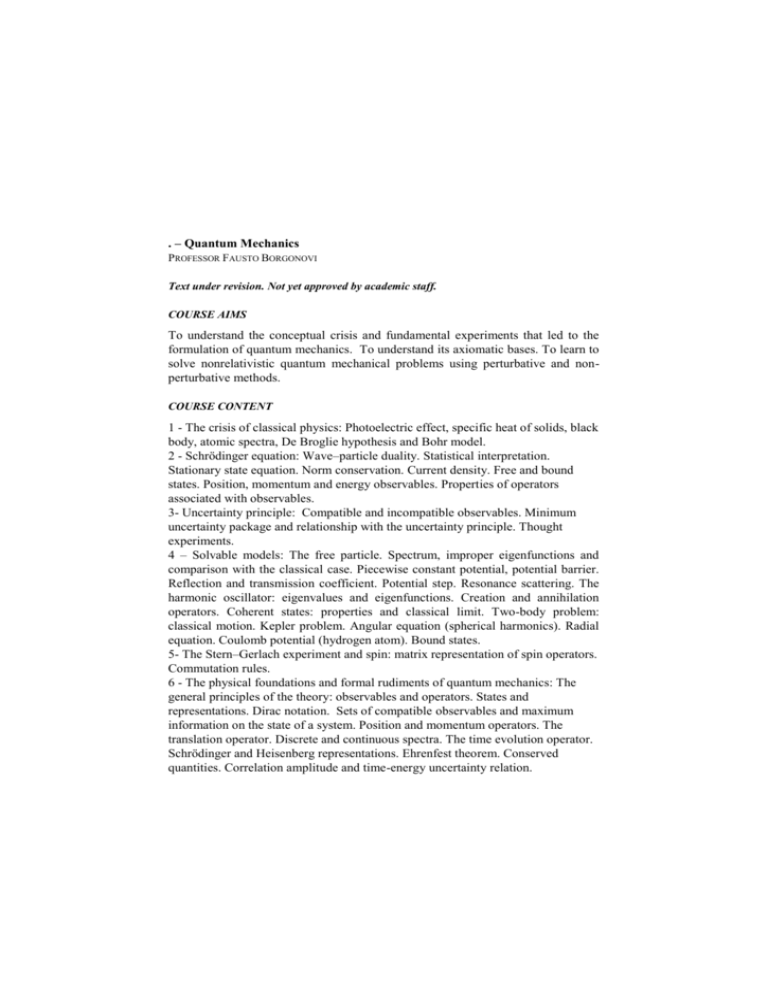
. – Quantum Mechanics PROFESSOR FAUSTO BORGONOVI Text under revision. Not yet approved by academic staff. COURSE AIMS To understand the conceptual crisis and fundamental experiments that led to the formulation of quantum mechanics. To understand its axiomatic bases. To learn to solve nonrelativistic quantum mechanical problems using perturbative and nonperturbative methods. COURSE CONTENT 1 - The crisis of classical physics: Photoelectric effect, specific heat of solids, black body, atomic spectra, De Broglie hypothesis and Bohr model. 2 - Schrödinger equation: Wave–particle duality. Statistical interpretation. Stationary state equation. Norm conservation. Current density. Free and bound states. Position, momentum and energy observables. Properties of operators associated with observables. 3- Uncertainty principle: Compatible and incompatible observables. Minimum uncertainty package and relationship with the uncertainty principle. Thought experiments. 4 – Solvable models: The free particle. Spectrum, improper eigenfunctions and comparison with the classical case. Piecewise constant potential, potential barrier. Reflection and transmission coefficient. Potential step. Resonance scattering. The harmonic oscillator: eigenvalues and eigenfunctions. Creation and annihilation operators. Coherent states: properties and classical limit. Two-body problem: classical motion. Kepler problem. Angular equation (spherical harmonics). Radial equation. Coulomb potential (hydrogen atom). Bound states. 5- The Stern–Gerlach experiment and spin: matrix representation of spin operators. Commutation rules. 6 - The physical foundations and formal rudiments of quantum mechanics: The general principles of the theory: observables and operators. States and representations. Dirac notation. Sets of compatible observables and maximum information on the state of a system. Position and momentum operators. The translation operator. Discrete and continuous spectra. The time evolution operator. Schrödinger and Heisenberg representations. Ehrenfest theorem. Conserved quantities. Correlation amplitude and time-energy uncertainty relation. 7 - Perturbation theory: time-independent for a discrete spectrum (degenerate and non-degenerate). Time-dependent. Interaction picture. Dyson expansion. Twostate problem. Rabi oscillations. Fermi's golden rule. Time-periodic potential. Variational method. 8 - General theory of angular momentum: eigenfunctions and eigenvalues. Spherical harmonics, properties. Comparison with the classical case. Addition of angular momenta. Clebsch-Gordan coefficients. 9 – Identical particles: exchange operator. Properties. Completely symmetric wave function and completely anti-symmetric wave function. Slater determinant. Spinstatistics connection. Bosons and fermions. Pauli exclusion principle. READING LIST 1. L.D. LANDAU - L. LIFSHITZ, Quantum Mechanics, Dover New York, 2000. 2. C. COHEN-TANNOUDJI - B. DIU - F. LALOE, Quantum Mechanics, Vol. I, II, Wiley and Sons, Paris, 2005. 3. P. CALDIROLA - R. CIRELLI - G.M. PROSPERI, Introduzione alla fisica teorica, Utet. 4. J. SAKURAI, Meccanica quantistica moderna, Zanichelli, Bologna, 1996. TEACHING METHOD Lectures (66 hours) and exercises (30 hours). ASSESSMENT METHOD Written and oral examination. NOTES Further information can be found on the lecturer's webpage http://www2.unicatt.it/unicattolica/docenti/index.html or on the Faculty notice board. at
